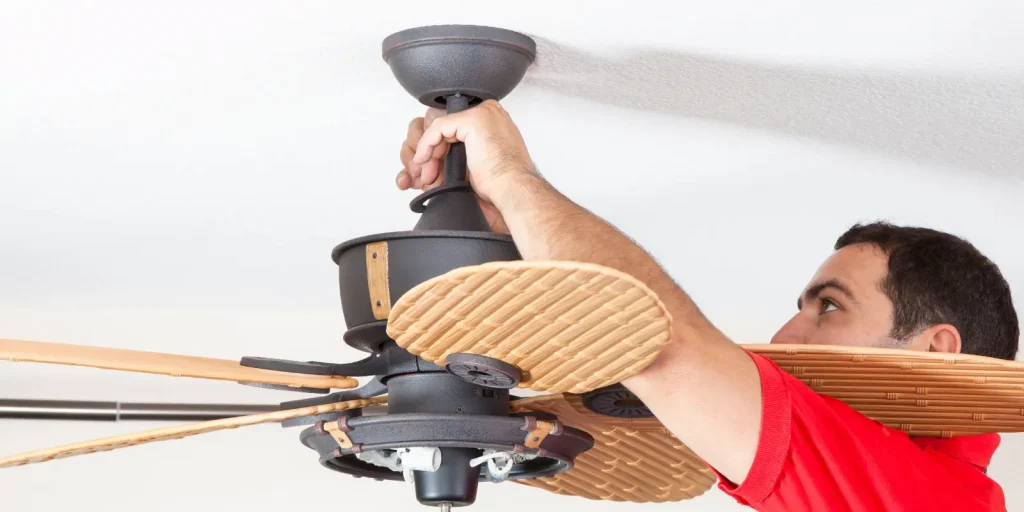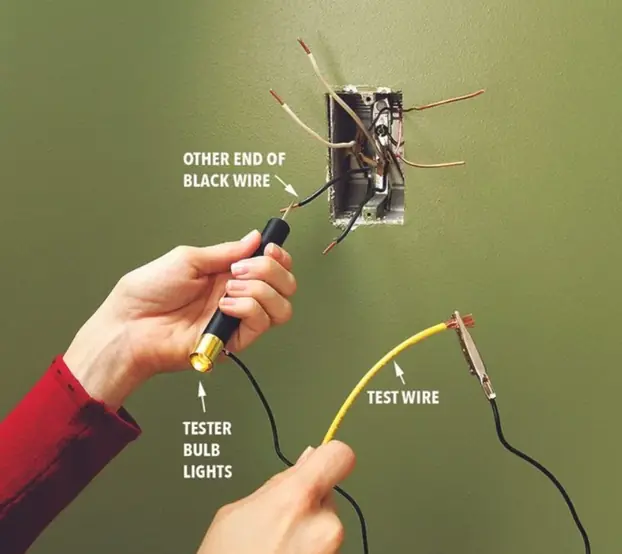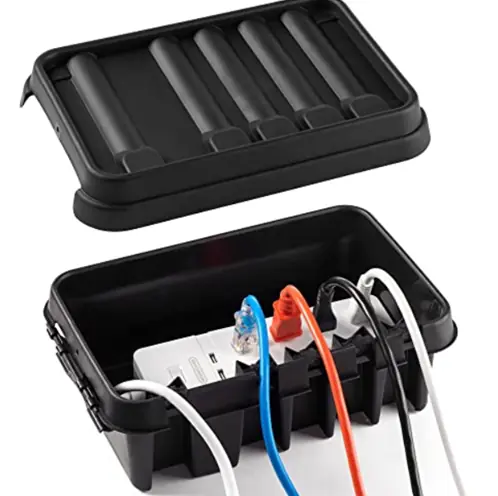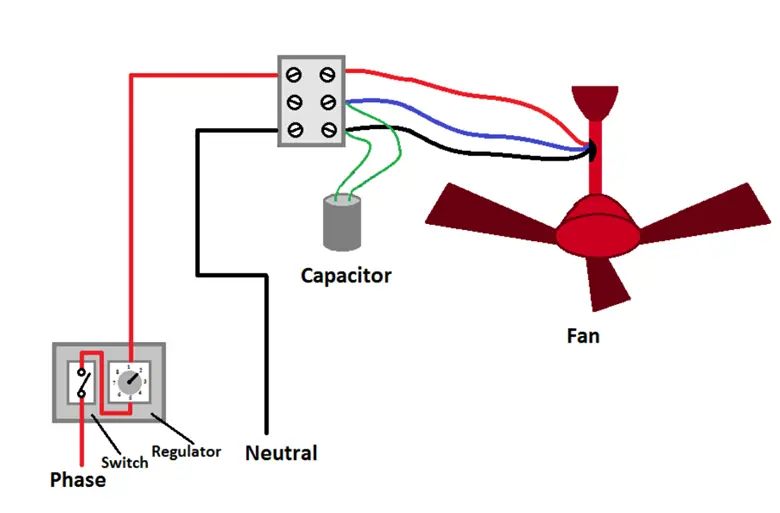Ceiling fans are a great way to cool down your home and make it look nice. You can install a ceiling fan from scratch, but you need to be careful when installing it.
If you don’t know what you’re doing, there’s a good chance that your ceiling fan will be unsafe and result in serious injuries.
This article will teach you to install a ceiling fan if there is no switch or connection available. It is important that you first complete the installation of the ceiling fans before you begin your work.

Follow These Steps to Install The Ceiling Fan
Step 1: Locate the source of power
The first step to installing a ceiling fan without existing wiring is locating the source of power. You should check the breaker box, as well as your light fixture or switch (if you have one).
Look for red wire in the breaker box and see if it matches anything else on your circuit board. If there’s no red wire, then it might be time to add some new wiring!
Step 2: Map out the current circuit using a circuit tester

Before beginning the installation process, you will need to check the current circuit with a circuit tester. A circuit tester is a tool used to test electrical circuits and determine whether they are working properly.
To use this tool, simply plug it into an outlet in your home or office and turn on the power switch. When you see two amber lights flash on, this means that there is power flowing through all outlets connected to it—and thus, no problems exist with any wiring connections!
Step 3: Upgrade the junction box to a larger size

You can use a junction box with the same size limitations as your existing switch. However, if you want to upgrade your ceiling fan’s wiring and install a new light kit, this will require more space in the junction box.
It is important that the junction box be securely attached to the wall so it doesn’t fall down or break off during installation. A good way of doing this is by screwing through holes in each side of your wall where there are studs (not drywall).
This method works especially well if there aren’t any electrical wires running through these walls yet!
Step 4: Connect the fan to the wiring

After you have verified that all the wires are properly connected and have the correct polarity, test it out by turning on one light with each switch individually before connecting them all together in series.
If you want to learn more about it, read about how to wire a ceiling fan.
Step 5: Connect the switch to the wiring
To connect the fan switch to the wiring, follow these steps:
Read: Controlling Ceiling Fans With A Dimmer Switch – Yes or No?
Step 6: Ensure that the fan and switch plate are installed
The next step is to ensure that the fan and switch plate are installed. The switch plate must be installed in a safe location, such as under or behind a wall or cabinet.
It should not be placed on top of any electrical wires because it could cause injury if someone accidentally touches them while they’re working on your ceiling fan installation.
The switch plate should also be placed so that it’s out of reach from children who may try to access it by climbing onto furniture or standing up tall on their tiptoes!
You want to make sure there’s no danger of them getting hurt if they fall off furniture accidentally while trying over and over again until they get it right (which happens).
Step 7: The power source must be 120 volts AC
The power source must be 120 volts AC. You will need to locate the circuit breaker in your house or apartment and the outlet that needs to be wired into it. If you are not sure what this is, consult with a professional electrician.
A circuit breaker should have three wires:
These three wires will be connected together at one point before being run through another outlet nearby, which then goes into another outlet at your ceiling fan installation location.
Step 8: Test the new fixture by turning on the electricity
Here is what you need to check in the new fixture by turning on the electricity.
That’s it, congratulations! Your new ceiling fan is now up and running!
Also Read: How To Troubleshoot A Ceiling Fan
Still confused, watch this detailed video guide from The Home Improvement Channel:
How to install an outdoor ceiling fan?
Step 1: Consider ceiling fans with fewer than five blades
Consider ceiling fans with fewer than five blades. If you’re not sure what kind of ceiling fan you want, consider a smaller one that uses less electricity. You can find these at most hardware stores and online retailers.
If you want to learn more in-depth information, read this article for more on purchasing an outdoor ceiling fan.
Step 2: Place a support brace
Place a support brace on the center post of your ceiling fan. This will help keep the weight of your ceiling fan more even and prevent it from wobbling when it’s turned on.
Step 3: Connect the wires
Connect the wires to power and ground on your ceiling fan. You can do this with wire nuts or electrical tape, depending on which type of wire nuts your ceiling fan requires.
Make sure you don’t connect too many wires or put them in an unsafe place—the last thing you want is for a spark to jump from one connection to another!
Step 4: Make sure your ceiling fan is pointing in the right direction
Make sure your ceiling fan is pointing in the right direction before turning it on! If it isn’t, then it may not work properly or cause injury if you touch the blades without proper protection (like gloves).
The easiest way to check this out is by looking at where the blades are pointing—if they’re pointing down towards where people will walk.
Step 5: Turn on your fan once it has been fully assembled
Congratulations! You’ve just finished installing your ceiling fan. Now it’s time to turn it on.
Make sure that the fan has been assembled properly by making sure that all the wires are connected properly and that there are no loose threads hanging out of any connections.
If You Don’t Have A Ceiling Fan & Looking To Buying It, Read Our Guide:
FAQs – Get more relevant information here!
Can a handyman install a ceiling fan?
Yes, a handyman with proper knowledge, training and experience can install a ceiling fan. They will be able to handle all the necessary steps such as wiring, installing the bracket and the fan, connecting it to the electrical box, ensuring proper grounding and testing the fan for proper functioning.
However it is important to make sure that handyman is licensed and bonded if required by law, and that he has the experience and the tools for the job.
Conclusion
We hope that we’ve provided you with the information needed to successfully install a ceiling fan in your home. Remember, it is important to keep safety in mind when working with electricity and wiring. Be sure to use the proper tools and equipment for this job.
If you have no prior experience with dealing with electrical work and have no complete certainty about how to install a ceiling fan without an existing circuit or power source, it is better to call a professional!

